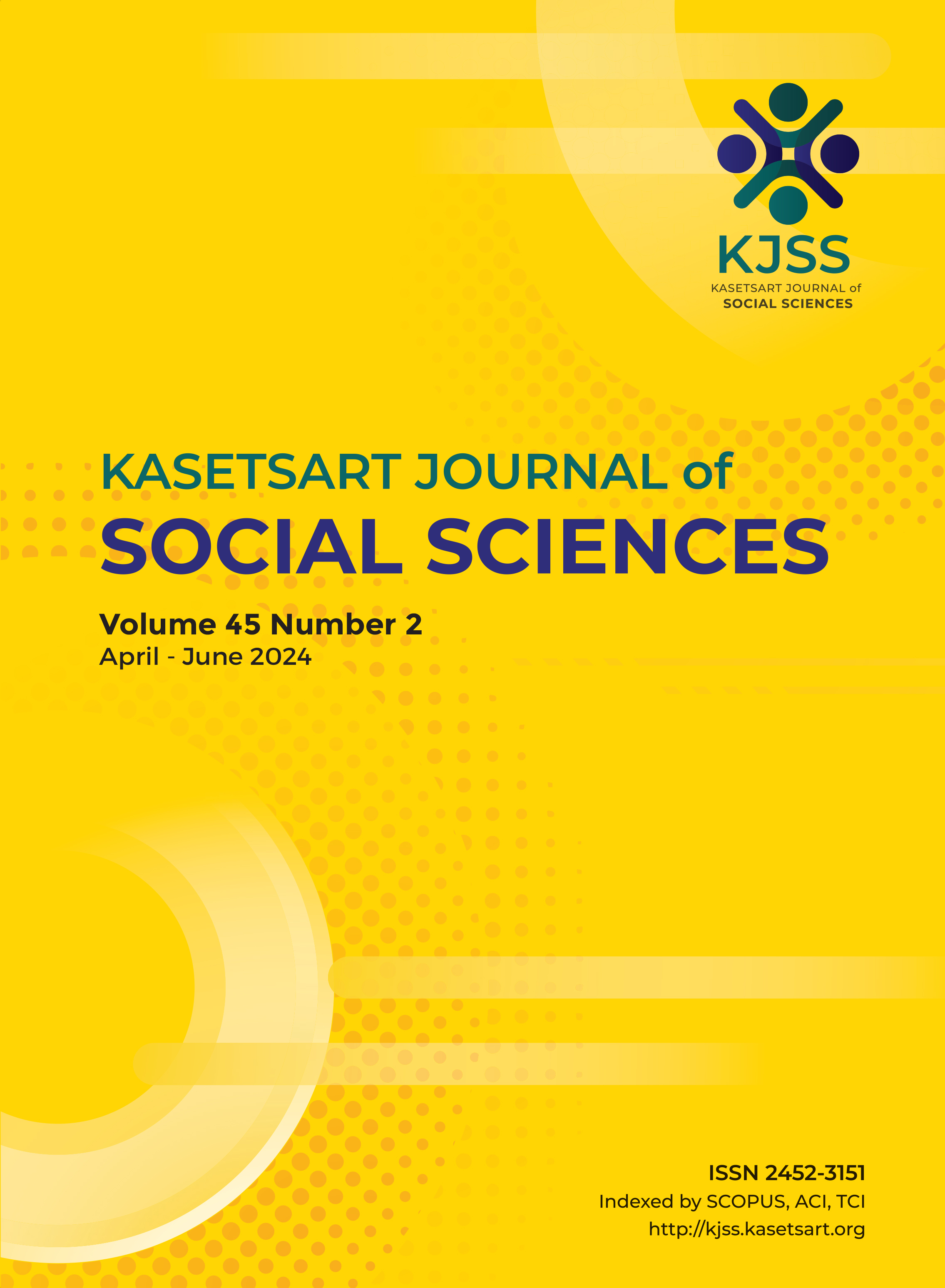Developing a cognitive ability test for Thai students
Keywords:
cognitive ability, cognitive ability test, cognitive assessment, Thai studentsAbstract
This study aims to validate a synthesized framework upon which to develop an instrument comprising indicators for measuring the cognitive abilities of upper primary school students and establish the norm for these cognitive ability scores. Both qualitative and quantitative research methods are employed. In-depth interviews with 30 experts and focus groups with 10 experts are used in the qualitative study to develop a conceptual framework for students’ cognitive abilities. Meanwhile, a quantitative study was conducted to validate the framework and measurement model using 1,914 students chosen from six different regions of Thailand. The data analysis employs SPSS for Windows version 28 and LISREL12. The conceptual framework consists of 4 components and 13 indicators obtained, as follows: (1) The information processing component, which comprises (1.1) perception, (1.2) learning new things, and (1.3) applying knowledge; (2) The thinking component, which comprises (2.1) reasoning, (2.2) analytical thinking, (2.3) numerical thinking, (2.4) planning and problem solving, and (2.5) creative thinking; (3) The language component, which comprises (3.1) encoding, and (3.2) decoding; (4) The accomplishment component, which comprises (4.1) utilizing skills, (4.2) goal attainment, and (4.3) adaptability. A second-order confirmatory factor analysis indicated that the measurement instrument has construct validity and fitted well with the empirical data, χ2(49) = 64.743, p = .065, GFI = .995, AGFI = .990, RMR = .018, RMSEA = .013). Thai student cognitive abilities fall into one of four categories: developing, typical, generally exceptional, and outstanding levels.
Downloads
Published
How to Cite
Issue
Section
License
Copyright (c) 2024 Kasetsart UniversityThis is an open access article under the CC BY-NC-ND license http://creativecommons.org/licenses/by-nc-nd/4.0/










